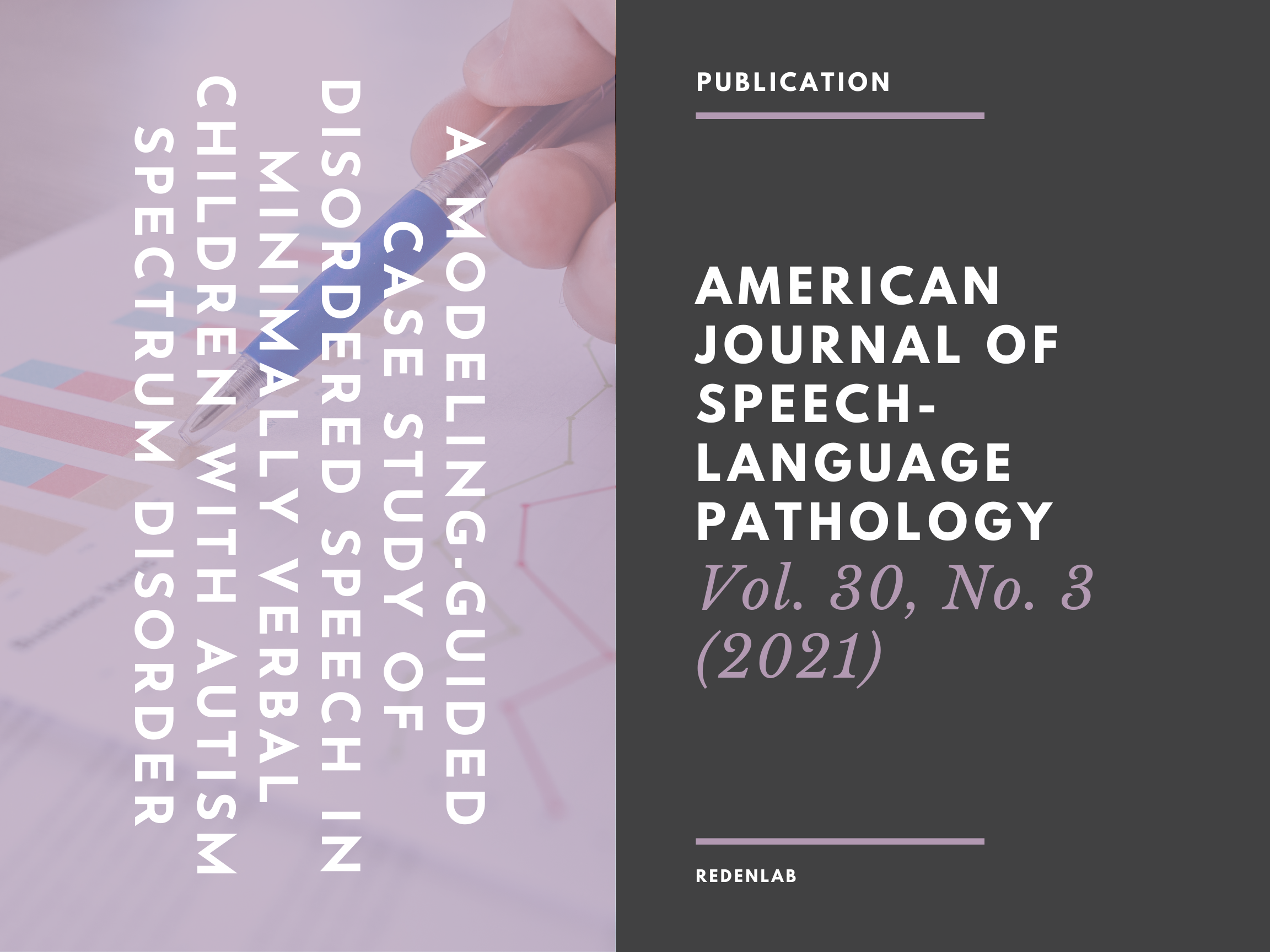A modeling-guided case study of disordered speech in minimally verbal children with autism spectrum disorder

Purpose
Understanding what limits speech development in minimally verbal (MV) children with autism spectrum disorder (ASD) is important for providing highly effective targeted therapies. This preliminary investigation explores the extent to which developmental speech deficits predicted by Directions Into Velocities of Articulators (DIVA), a computational model of speech production, exemplify real phenotypes.
Method
Implementing a motor speech disorder in DIVA predicted that speech would become highly variable within and between tokens, while implementing a motor speech plus an auditory processing disorder predicted that DIVA’s speech would become highly centralized (schwa-like). Acoustic analyses of DIVA’s output predicted that acoustically measured phoneme distortion would be similar between the two cases, but that in the former case, speech would show more within- and between-token variability than in the latter case. We tested these predictions quantitatively on the speech of children with MV ASD. In Study 1, we tested the qualitative predictions using perceptual analysis methods. Speech pathologists blinded to the purpose of the study tallied the signs of childhood apraxia of speech that appeared in the speech of 38 MV children with ASD. K-means clustering was used to create two clusters from the group of 38, and analysis of variance was used to determine whether the clusters differed according to perceptual features corresponding to within- and between-token variability. In Study 2, we employed acoustic analyses on the speech of the child from each cluster who produced the largest number of analyzable tokens to test the predictions of differences in within-token variability, between-token variability, and vowel space area.
Results
Clusters produced by k-means analysis differed by perceptual features that corresponded to within-token variability. Nonsignificant differences between clusters were found for features corresponding to between-token variability. Subsequent acoustic analyses of the selected cases revealed that the speech of the child from the high-variability cluster showed significantly more quantitative within- and between-token variability than the speech of the child from the low-variability cluster. The vowel space of the child from the low-variability cluster was more centralized than that of typical children and that of the child from the high-variability cluster.
Conclusions
Results provide preliminary evidence that subphenotypes of children with MV ASD may exist, characterized by (a) comorbid motor speech disorder and (b) comorbid motor speech plus auditory processing disorder. The results motivate testable predictions about how these comorbidities affect speech.
Click here for more details
